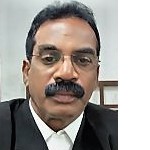Occular and testimonial evidence:
 Carlisle Collins
(Querist) 30 June 2014
This query is : Resolved
Carlisle Collins
(Querist) 30 June 2014
This query is : Resolved
This question relates to Hon. Supreme Court of India in Tahsildar Singh and Another vs The State Of Uttar Pradesh on 5 May, 1959 [Equivalent citations: 1959 AIR 1012, 1959 SCR Supl. (2) 875].
The Supreme Court issued and clarified guidelines on factors that color witness statements as “omission”, “contradiction” “improvisation” – which opened my floodgate to confusion!!
Can someone simplify the ruling with examples? For instance, if a (purported) victim’s written statement (CrPC 162) to the police included a material fact: e.g., that he had sustained a cigarette burn on the wrist from the alleged perpetrator. But, during forensic (medical) examination, the physician finds no sign of injury; neither does the alleged victim make any mention of this “burn incident” to the Examiner; nevertheless, more than a month later in his statement to the magistrate (CrPC 164), he points out a scar on his wrist which the magistrate makes note of (and makes an unqualified medical opinion linking the scar to a “burn mark”).
What are the necessary elements that transform an omission into a material “contradiction”? What legal factors could color the purported victim’s story as “innovation”? Can someone explain in general terms the legal distinction (not just the dictionary definition) between Omission, Contradiction, and Improvisation?
Thanks for your patience, effort, and indulgence.
 R.K Nanda
(Expert) 30 June 2014
R.K Nanda
(Expert) 30 June 2014
academic query.
 T. Kalaiselvan, Advocate
(Expert) 01 July 2014
T. Kalaiselvan, Advocate
(Expert) 01 July 2014
I shall standby the experts on such queries which are of academic in nature.
 Carlisle Collins
(Querist) 17 July 2014
Carlisle Collins
(Querist) 17 July 2014
Thank You, Experts, for your observation, i.e., that it’s an “academic question” but it is neither hypothetical nor abstract. Situations turn up during cross-examination where one is faced with this dilemma – or how to persuade the Hon’ble court to form a favorable opinion.
Since introducing the issue for public discussion in this forum, I discovered the following which, I hope, would help us in clearly establishing the fact at issue:
There exists a plethora of case law that elucidates when an “Omission” is regarded as amounting to material “Contradiction”. In order that an omission should amount to a contradiction, the omission should clearly suggest the opposite of what was stated in the evidence of the informant and such omission should also be significant.
The Hon. Supreme Court issued landmark guidelines in Tehsildar Singh vs. State of UP [AIR 1012, 5 May 1959 - SCR Supl. (2) 875 - Author: B P Sinha]. “In some cases an omission in the statement under s. 162 may amount to contradiction of the deposition in Court; they are the cases where what is actually stated is irreconcilable with what is omitted and impliedly negatives its existence…. any part of such statement, if duly proved, may be used to contradict such witness …". This ruling has not been disturbed yet.
Thanks again. CC.
